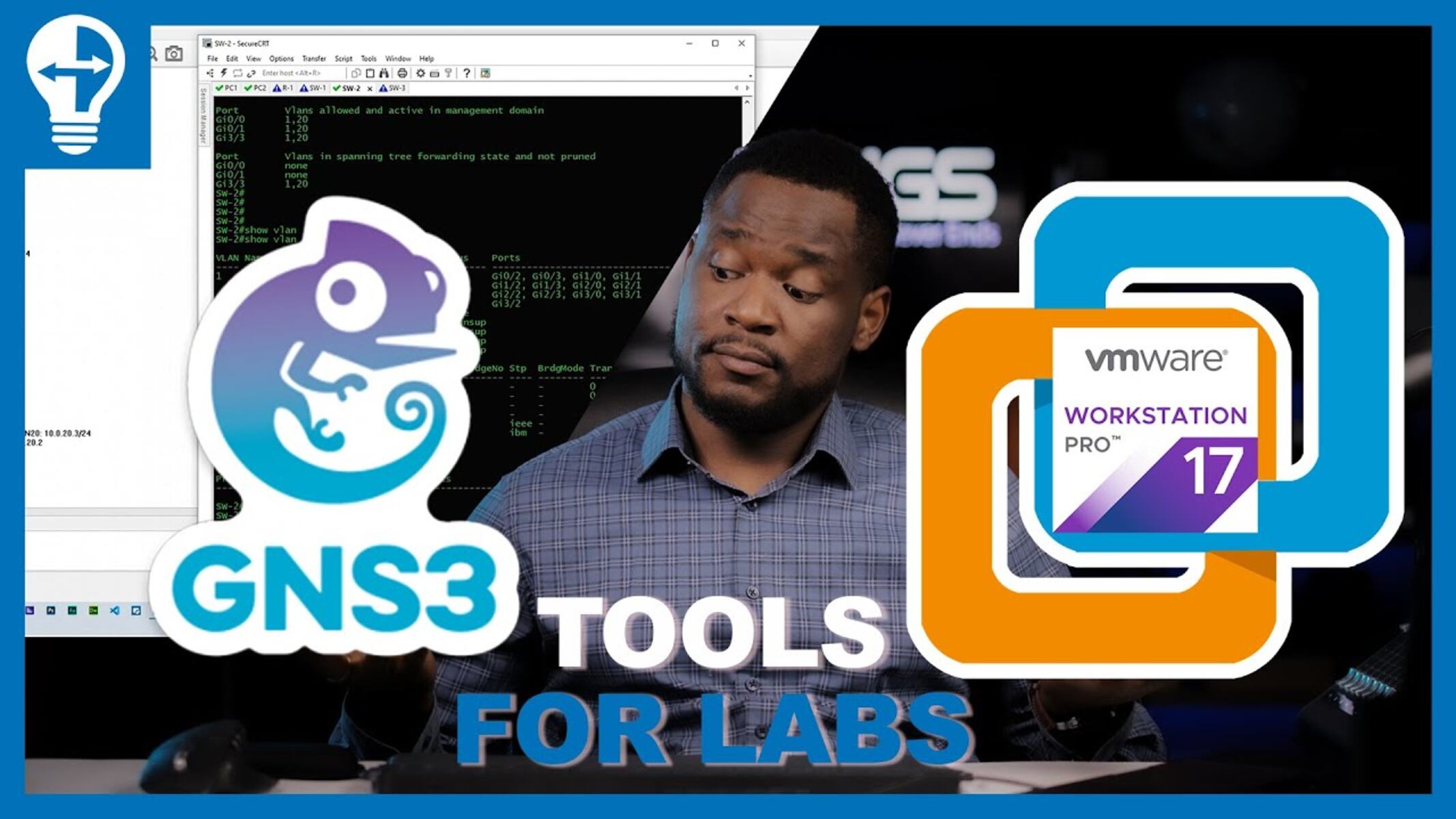Introduction
Welcome to this guide on how to add a network connection in VMware Workstation. VMware Workstation is a popular virtualization software that allows you to create and run virtual machines on your computer. Adding a network connection to a virtual machine in VMware Workstation is essential for enabling network communication and accessing resources between the host computer and the virtual machine.
In this tutorial, we will walk you through the step-by-step process of configuring and adding a network connection to a virtual machine in VMware Workstation. By following these instructions, you’ll be able to establish a network connection that allows your virtual machine to communicate with other devices on your network or access the internet.
Before we dive into the steps, there are a few prerequisites you need to note. Firstly, you should have VMware Workstation installed on your computer and have a virtual machine already set up. If you haven’t done so yet, make sure to install VMware Workstation and create a virtual machine before proceeding further.
Secondly, you should have a basic understanding of networking concepts, such as IP addresses, subnet masks, and default gateways. This knowledge will help you configure the network settings in VMware Workstation effectively.
Lastly, ensure that you have administrative privileges on your computer, as some configuration settings may require administrative access.
Now that we have covered the prerequisites let’s get started with the steps to add a network connection in VMware Workstation. Follow along, and you’ll be up and running with your network-enabled virtual machine in no time!
Prerequisites
Before we begin, there are a few prerequisites you need to fulfill in order to successfully add a network connection in VMware Workstation. These requirements will ensure a smooth and hassle-free configuration process. Here’s what you’ll need:
1. VMware Workstation: Make sure you have VMware Workstation installed on your computer. If you haven’t already, visit the official VMware website and download the latest version of VMware Workstation suitable for your operating system.
2. Virtual Machine: Create a virtual machine in VMware Workstation. This can be an existing virtual machine or a new one that you create specifically for this network configuration. Ensure that the virtual machine is powered off before proceeding with the steps to add a network connection.
3. Networking Knowledge: Familiarize yourself with basic networking concepts, such as IP addresses, subnet masks, and default gateways. Understanding these concepts will help you effectively configure the network settings in VMware Workstation and establish a successful network connection.
4. Administrative Privileges: Ensure that you have administrative privileges on your computer. Some configuration settings in VMware Workstation may require administrative access to make changes. If you don’t have administrative privileges, consult with your system administrator or refer to your computer’s documentation on how to obtain administrative rights.
By meeting these prerequisites, you’ll have everything you need to proceed with adding a network connection in VMware Workstation. Once you have confirmed that you have VMware Workstation installed, a virtual machine set up, basic networking knowledge, and administrative privileges, you are ready to move on to the next section.
Step 1: Configure Network Settings
Before adding a network connection to your virtual machine, you need to configure the network settings in VMware Workstation. This step involves selecting the appropriate network type and assigning network details to your virtual machine. Follow these steps to configure the network settings:
1. Launch VMware Workstation and open the virtual machine you want to configure.
2. Go to the “Edit” menu and select “Virtual Machine Settings”.
3. In the Virtual Machine Settings window, click on the “Network Adapter” tab.
4. Under “Network Connection”, select the desired network type. You have several options to choose from, including Bridged, NAT, Host-Only, or Custom. Each network type has its own advantages and use cases, so choose the one that best suits your specific requirements.
5. If you choose the “Bridged” network type, select the network adapter that will be used for bridging from the “Bridged to” dropdown menu. This allows the virtual machine to connect directly to the physical network and obtain its own IP address from the router or DHCP server.
6. If you choose the “NAT” network type, you can leave the default settings as they are, as VMware Workstation will automatically assign an IP address to the virtual machine using Network Address Translation (NAT). This allows the virtual machine to access the internet through the host computer’s network connection.
7. If you choose the “Host-Only” network type, the virtual machine will be able to communicate only with the host computer and any other virtual machines running on the same host. This can be useful for creating isolated networks for testing or development purposes.
8. If you choose the “Custom” network type, you have more advanced options to configure, such as specifying a specific virtual network adapter or customizing network settings. This option is suitable if you have specific network requirements or if you want to create a virtual network with specific characteristics.
9. Once you have selected the desired network type and made any additional customizations, click “OK” to save the network settings.
By following these steps, you have successfully configured the network settings for your virtual machine in VMware Workstation. In the next step, we will add a new network adapter to the virtual machine to establish a network connection.
Step 2: Add a New Network Adapter
After configuring the network settings in VMware Workstation, the next step is to add a new network adapter to your virtual machine. This additional network adapter will enable the virtual machine to connect to the network and establish a network connection. Follow these instructions to add a new network adapter:
1. With your virtual machine open in VMware Workstation, go to the “Edit” menu and select “Virtual Machine Settings”.
2. In the Virtual Machine Settings window, click on the “Add” button at the bottom of the window.
3. In the “Add Hardware” window, select “Network Adapter” and click “Next”.
4. Choose whether you want to use a physical network connection or a custom specific virtual network. If you select the physical network connection, VMware Workstation will automatically detect the available network adapters on your host machine. If you choose a custom specific virtual network, you can create and configure a new virtual network adapter. Select the appropriate option and click “Finish”.
5. Back in the Virtual Machine Settings window, you will see the newly added network adapter listed. You can further customize the adapter settings by selecting it and clicking on the “Configure Adapters” button.
6. In the Network Adapter Properties window, you can modify the adapter type, specify a custom MAC address, enable or disable the adapter, and adjust other advanced settings if needed. Make the necessary changes and click “OK”.
7. Once you have finished configuring the network adapter settings, click “OK” in the Virtual Machine Settings window to save the changes.
By following these steps, you have successfully added a new network adapter to your virtual machine in VMware Workstation. In the next step, we will configure the network connection for the virtual machine using the newly added network adapter.
Step 3: Configure the Virtual Machine’s Network Connection
Now that you have added a new network adapter to your virtual machine in VMware Workstation, it’s time to configure the network connection for the virtual machine. This involves assigning network details and settings that will allow the virtual machine to communicate with other devices on the network or access the internet. Follow these steps to configure the virtual machine’s network connection:
1. Power on your virtual machine in VMware Workstation.
2. Once the virtual machine has booted up, log in and navigate to the network settings of the guest operating system. The steps for accessing the network settings may vary depending on the operating system running on your virtual machine.
3. In the network settings, choose the network adapter that corresponds to the newly added network adapter in VMware Workstation. This ensures that the virtual machine uses the correct network adapter for its network connection.
4. Depending on your network configuration, you can choose to obtain an IP address automatically (via DHCP) or manually assign a static IP address to the virtual machine. Select the appropriate option based on your network requirements.
5. If you choose to configure a static IP address, enter the IP address, subnet mask, default gateway, and DNS server details as per your network configuration. These details can be obtained from the network administrator or the router’s settings.
6. Save the network settings in the guest operating system and close the network settings window.
7. Return to VMware Workstation and ensure that the virtual machine is still powered on.
8. Verify the network connection by pinging another device on the network or by opening a web browser and accessing a website.
By following these steps, you have successfully configured the virtual machine’s network connection in VMware Workstation. The virtual machine should now be able to communicate with other devices on the network and access the internet if configured accordingly.
In the next step, we will test the network connection to ensure that it is functioning properly.
Step 4: Test the Connection
After configuring the network settings and establishing the network connection for your virtual machine in VMware Workstation, it’s essential to test the connection to ensure that everything is working as expected. By performing a connection test, you can verify if the virtual machine is successfully communicating with other devices on the network or accessing the internet. Follow these steps to test the network connection:
1. Power on your virtual machine if it is not already running.
2. Once the virtual machine has booted up, open a web browser and try accessing a website. If the virtual machine is properly connected to the network and has internet access, the website should load successfully.
3. To further test the network connection, you can open a command prompt or terminal within the virtual machine’s guest operating system.
4. Type the command “ping [IP address or hostname]” to send ICMP echo requests to another device on the network. This can be the IP address of your router, another computer on the network, or a known IP address on the internet (such as 8.8.8.8, which is Google’s public DNS server).
5. If the ping command successfully receives replies, it means that the virtual machine is able to communicate with the specified device over the network. This confirms that the network connection is functioning correctly.
6. If the ping command does not receive replies or shows a timeout, there might be an issue with the network configuration or connectivity. Double-check the network settings in VMware Workstation and the guest operating system, ensuring that the correct network adapter is selected and the IP address/subnet mask/default gateway settings are accurate.
7. If you encounter any issues, you can try restarting the virtual machine, reconfiguring the network settings, or checking the network infrastructure (such as cables, routers, and firewalls) for any potential problems.
By following these steps and performing a thorough network connection test, you can confirm that the virtual machine’s network connection in VMware Workstation is working properly. This ensures that your virtual machine can seamlessly communicate with other network devices and access the internet as needed.
Conclusion
Adding a network connection to your virtual machine in VMware Workstation is a crucial step in enabling network communication and accessing resources on the network or the internet. By following the steps outlined in this guide, you can successfully configure and establish a network connection for your virtual machine.
In the initial steps, we discussed the prerequisites, which include having VMware Workstation installed, setting up a virtual machine, having basic networking knowledge, and ensuring administrative privileges. These requirements are essential for a smooth configuration process.
We then walked through the step-by-step process of configuring the network settings in VMware Workstation. This involves selecting the appropriate network type and customizing the settings to suit your specific needs.
Next, we covered the process of adding a new network adapter to the virtual machine. This additional adapter allows the virtual machine to connect to the network and establish a network connection.
After adding the network adapter, we moved on to configuring the virtual machine’s network connection. This involves assigning network details such as IP addresses, subnet masks, default gateways, and DNS server settings to ensure proper network communication.
Finally, we emphasized the importance of testing the network connection to confirm its functionality. By accessing websites, pinging other devices on the network, or performing network-related tasks, you can ensure that the virtual machine is successfully communicating with other devices and accessing the internet, or the expected network resources.
With these steps completed, you can confidently use your virtual machine in VMware Workstation, knowing that it is properly connected to the network and capable of seamless network communication.
Remember, configuring and adding a network connection in VMware Workstation may require some troubleshooting and adjustments based on your specific network environment. Be sure to consult the official documentation or seek assistance from VMware support if you encounter any difficulties.
Now that you have successfully added a network connection to your virtual machine, you can enjoy the benefits of network communication and access resources as needed. Happy virtualization!

























